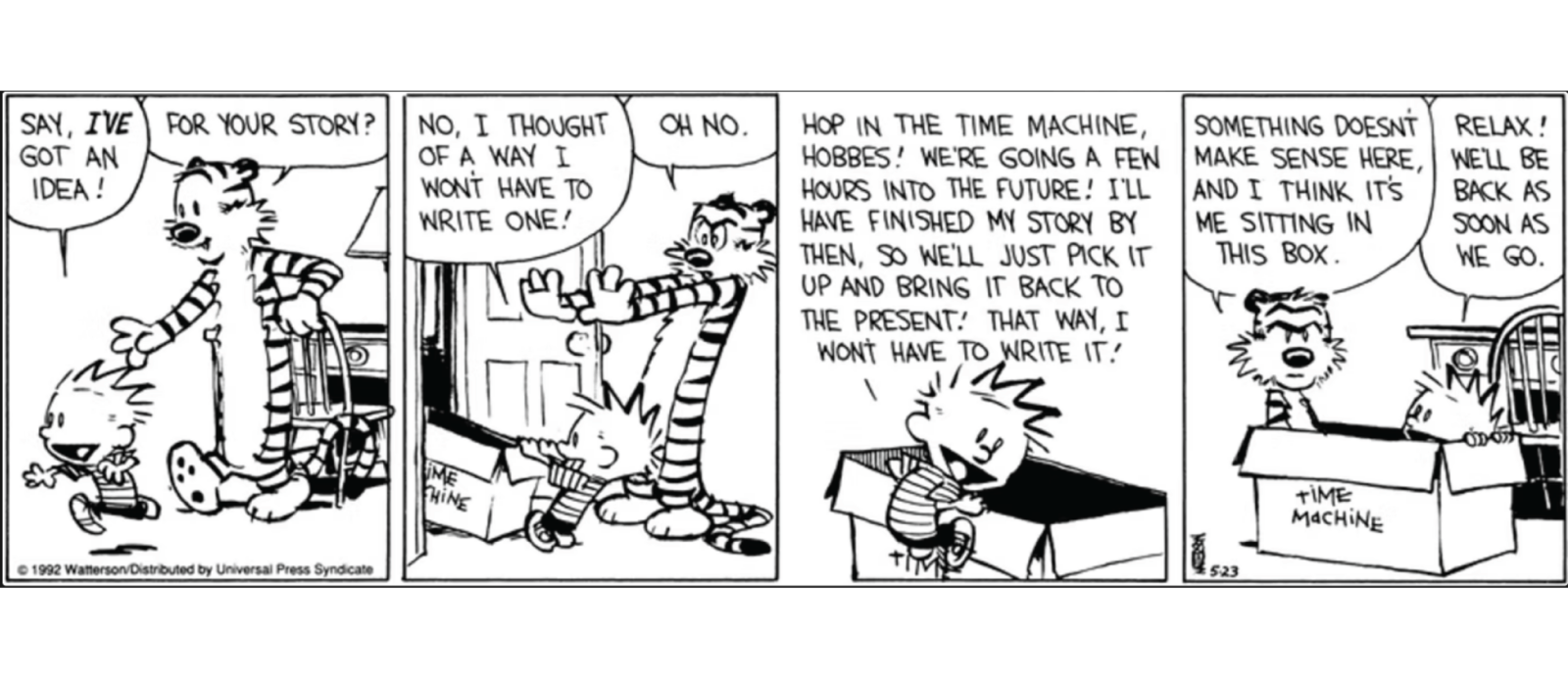Over the years, the timeless duo of Calvin and Hobbes has touched on complex subjects like philosophy, morality, and politics—all with a sweet aftertaste of humour and wit. One look at the origin of their relationship, though, yields an interesting perspective about children and their wild and vibrant imagination.
Remember the playtime when your friends weren’t around, and how you’d spend several hours with a make-believe toy, mumbling away half-baked conversations with an imaginary friend? Or that slow-paced summer afternoon, when camped in a corner of your house, you revelled in a carnival of stories true and imaginary.
Packed with adventure, these fantastic scenarios were our escape from the mundane world of school and home. Repeated on a loop, these thoughts, conversations, and actions build one’s personality brick by brick. Imagination gives wings to creativity, and a dreamy world becomes our reality.
On World Dream Day, let’s set sail with Calvin and Hobbes on a journey of understanding the role of imaginary playmates/companions, private realities, and fantastic dreams in the lives of children.
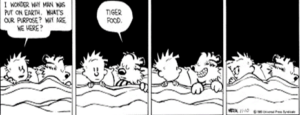
Calvin is a young, inquisitive boy, while Hobbes is his stuffed tiger and best friend. In his fertile imagination, Calvin not only befriends Hobbes using a tiger trap but also shares life’s many insights and observations with him. Together the duo manages both, fighting monsters under their bed and discussing existentialism efficiently.

Call them rants or mindless chatter, Calvin’s conversations with Hobbes are a window to the expressive minds of children, where nothing is impossible. Whether it’s the desired background score of their play time or a teleporting time machine. DIY rules their lives and they’re all for it!
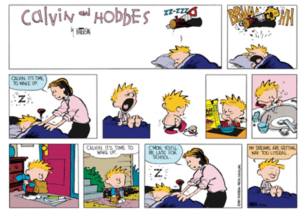
The rapturous dreamland of children is studded with myriad instances from their lives. This comic strip about dreaming about being woken up for school while indeed being jolted out of bed is as relatable as it gets. Even Calvin’s aching dilemma about adulting draws parallels in every child’s assortment of questions about growing up.

In more ways than one, the comic strip captures the curiosity of children, fuelled by the vivid imagery of their minds and the play of scenes in their dreams. As one chuckles reading one strip after the other, the role of curiosity, exploration, and marvel in the development of children reveals itself. A child’s curiosity drives his/her perspective about the world and its functioning. What they see, they question. Their minds then grope for answers to these questions in the unbridled world of their imagination.
What they see of the world—the good and the bad—finds replication and dramatization in their mind and play, eventually moulding their thoughts and values. Right from the profession they choose and the kind of friends they make to their thoughts on climate change and politics, every frame of their reality finds a seed in their vision.
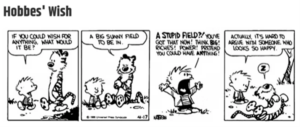
Calvin’s questions to Hobbes about ambitions and wishes are exemplars of children’s perspectives on goals and metrics of success.
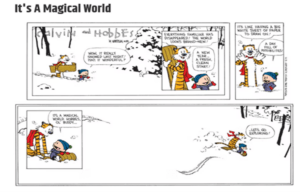
Complementing Calvin’s passion is Hobbes’ relentless and reassuring simplicity—representing an idealist combination, where dreams not only fuel curiosity and creativity, but also spark marvel and magic.
